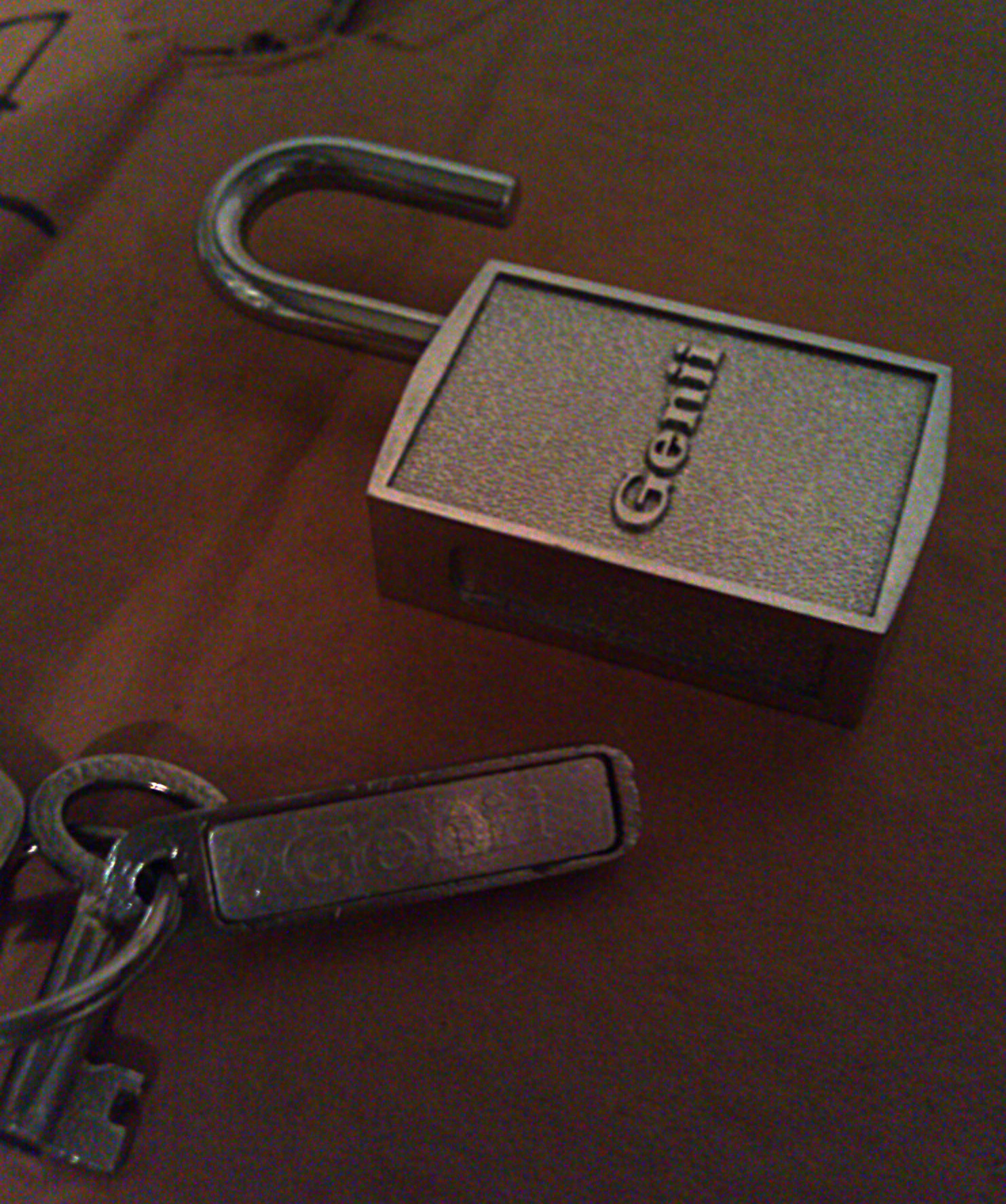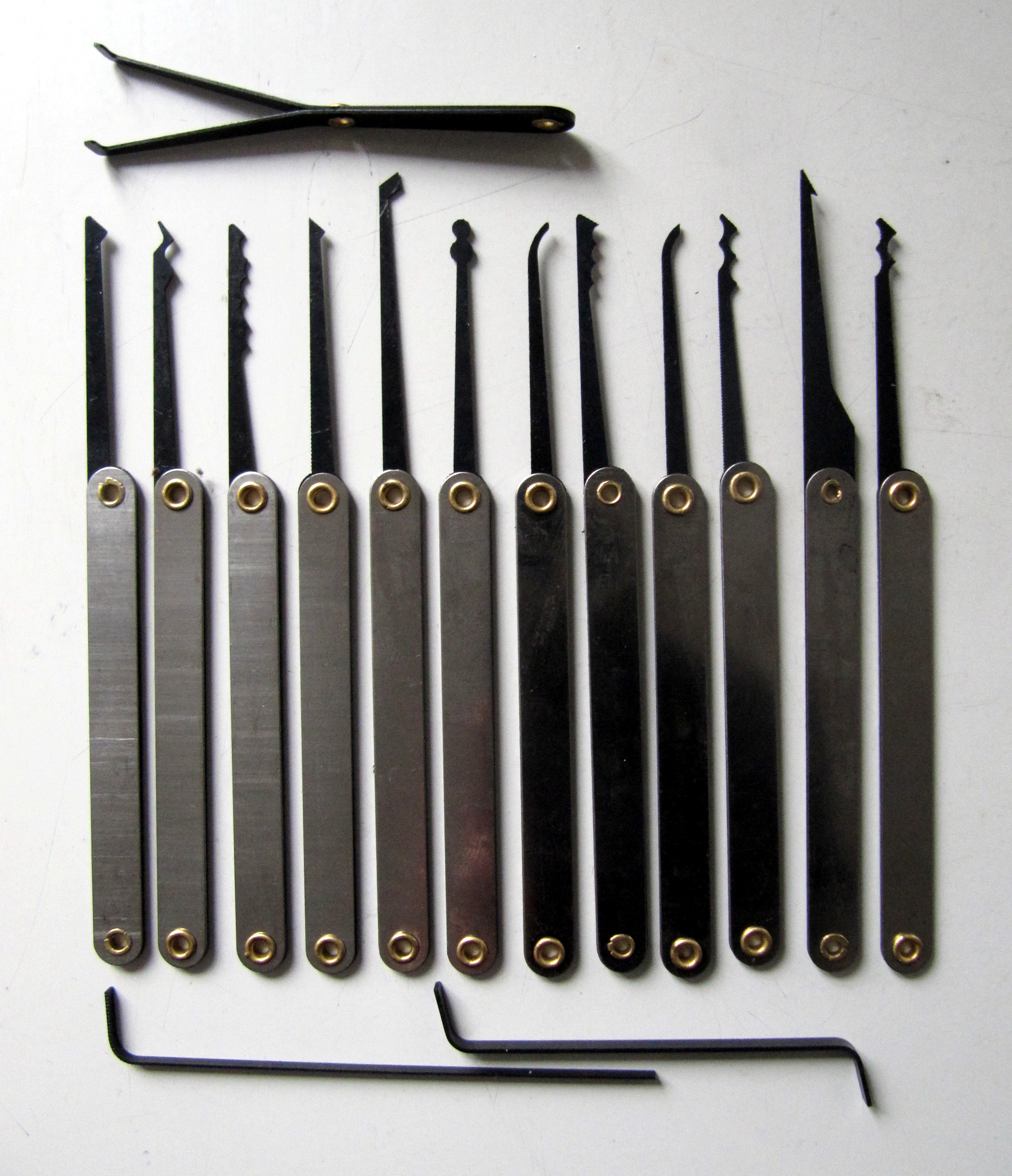|
Magnetic Keyed Lock
A magnetic keyed lock or magnetic-coded lock is a Lock (security device), locking mechanism whereby the key utilizes magnets as part of the locking and unlocking mechanism. Magnetic-coded locks encompass knob locks, cylinder locks, lever locks, and deadbolt locks as well as applications in other security devices. Design A magnetic key uses from one to many small magnets oriented so that the North / South Poles would equate to a combination to push or pull the lock's internal tumblers thus releasing the lock. This is a totally passive system requiring no electricity or electronics to activate or deactivate the mechanism. Using several magnets at differing polarity / orientations and different strengths can allow thousands of different combinations per key. Magnetic-coded technology utilizes multiple pairs of magnetic pins with opposing poles that are embedded inside keys and plugs. When a correctly matched key is inserted into the lock, not only are all the mechanical pins pus ... [...More Info...] [...Related Items...] OR: [Wikipedia] [Google] [Baidu] |
Magnetic Lock
An electromagnetic lock, magnetic lock, or maglock is a locking device that consists of an electromagnet and an armature plate. There are two main types of electric locking devices. Locking devices can be either "fail safe" or "fail secure". A fail-secure locking device remains locked when power is lost. Fail-safe locking devices are unlocked when de-energized. Direct pull electromagnetic locks are inherently fail-safe. Typically the electromagnet portion of the lock is attached to the door frame and a mating armature plate is attached to the door. The two components are in contact when the door is closed. When the electromagnet is energized, a current passing through the electromagnet creates a magnetic flux that causes the armature plate to attract to the electromagnet, creating a locking action. Because the mating area of the electromagnet and armature is relatively large, the force created by the magnetic flux is strong enough to keep the door locked even under stress. Typical ... [...More Info...] [...Related Items...] OR: [Wikipedia] [Google] [Baidu] |
Lock (security Device)
A lock is a mechanics, mechanical or Electronics, electronic fastening device that is released by a physical object (such as a key, Keycard lock, keycard, fingerprint, Radio-frequency identification, RFID card, security token or coin), by supplying secret information (such as a number or letter permutation or password), by a combination thereof, or it may only be able to be opened from one side, such as a door chain. A key is a device that is used to operate a lock (to lock or unlock it). A typical key is a small piece of metal consisting of two parts: the ''Bit (key), bit'' or ''blade'', which slides into the keyhole, keyway of the lock and distinguishes between different keys, and the ''bow'', which is left protruding so that torque can be applied by the user. In its simplest implementation, a key operates one lock or set of locks that are keyed alike, a lock/key system where each similarly keyed lock requires the same, unique key. The key serves as a security token for access ... [...More Info...] [...Related Items...] OR: [Wikipedia] [Google] [Baidu] |
Magnet
A magnet is a material or object that produces a magnetic field. This magnetic field is invisible but is responsible for the most notable property of a magnet: a force that pulls on other ferromagnetic materials, such as iron, steel, nickel, cobalt, etc. and attracts or repels other magnets. A permanent magnet is an object made from a material that is magnetized and creates its own persistent magnetic field. An everyday example is a refrigerator magnet used to hold notes on a refrigerator door. Materials that can be magnetized, which are also the ones that are strongly attracted to a magnet, are called ferromagnetic (or ferrimagnetic). These include the elements iron, nickel and cobalt and their alloys, some alloys of rare-earth metals, and some naturally occurring minerals such as lodestone. Although ferromagnetic (and ferrimagnetic) materials are the only ones attracted to a magnet strongly enough to be commonly considered magnetic, all other substances respond wea ... [...More Info...] [...Related Items...] OR: [Wikipedia] [Google] [Baidu] |
Cylinder Lock
The pin tumbler lock is a lock mechanism that uses pins of varying lengths to prevent the lock from opening without the correct key. Pin tumblers are most commonly employed in cylinder locks, but may also be found in tubular pin tumbler locks (also known as radial locks or ace locks). History The first known example of a tumbler lock was found in the ruins of the Palace of Khorsabad built by king Sargon II (721–705 BC.) in Iraq.James, Peter, and I. J. Thorpe. Ancient Inventions. New York: Ballantine, 1994. Basic principles of the pin tumbler lock may date as far back as 2000 BC in Egypt; the lock consisted of a wooden post affixed to the door and a horizontal bolt that slid into the post. The bolt had vertical openings into which a set of pins fitted. These could be lifted, using a key, to a sufficient height to allow the bolt to move and unlock the door. This wooden lock was one of Egypt's major developments in domestic architecture during classical times. Suc ... [...More Info...] [...Related Items...] OR: [Wikipedia] [Google] [Baidu] |
Lever Lock
A lever is a simple machine consisting of a beam or rigid rod pivoted at a fixed hinge, or ''fulcrum''. A lever is a rigid body capable of rotating on a point on itself. On the basis of the locations of fulcrum, load and effort, the lever is divided into three types. Also, leverage is mechanical advantage gained in a system. It is one of the six simple machines identified by Renaissance scientists. A lever amplifies an input force to provide a greater output force, which is said to provide leverage. The ratio of the output force to the input force is the mechanical advantage of the lever. As such, the lever is a mechanical advantage device, trading off force against movement. Etymology The word "lever" entered English around 1300 from Old French, in which the word was ''levier''. This sprang from the stem of the verb ''lever'', meaning "to raise". The verb, in turn, goes back to the Latin ''levare'', itself from the adjective ''levis'', meaning "light" (as in "not heavy"). Th ... [...More Info...] [...Related Items...] OR: [Wikipedia] [Google] [Baidu] |
Deadbolt
A dead bolt, deadbolt or dead lock is a locking mechanism distinct from a spring bolt lock because a deadbolt can only be opened by a key or handle. The more common spring bolt lock uses a spring to hold the bolt in place, allowing retraction by applying force to the bolt itself. A deadbolt can therefore make a door more resistant to entry without the correct key, as well as make the door more resistant to forced entry. A deadbolt is often used to complement a spring-bolt lock on an entry door to a building. Common types A deadlock, if it is cylinder operated, may be either single cylinder or double cylinder. A single cylinder deadlock will accept a key on one side of the lock, but is operated by a twist knob on the other side. Double cylinder locks will accept a key on both sides and therefore do not require (and often do not have) any twist knob. This prevents unwanted unlocking of the door by forced access to the interior twist knob (via a nearby window, for example). Dou ... [...More Info...] [...Related Items...] OR: [Wikipedia] [Google] [Baidu] |
Permanent Magnet
A magnet is a material or object that produces a magnetic field. This magnetic field is invisible but is responsible for the most notable property of a magnet: a force that pulls on other ferromagnetic materials, such as iron, steel, nickel, cobalt, etc. and attracts or repels other magnets. A permanent magnet is an object made from a material that is magnetized and creates its own persistent magnetic field. An everyday example is a refrigerator magnet used to hold notes on a refrigerator door. Materials that can be magnetized, which are also the ones that are strongly attracted to a magnet, are called ferromagnetic (or ferrimagnetic). These include the elements iron, nickel and cobalt and their alloys, some alloys of rare-earth metals, and some naturally occurring minerals such as lodestone. Although ferromagnetic (and ferrimagnetic) materials are the only ones attracted to a magnet strongly enough to be commonly considered magnetic, all other substances respond weak ... [...More Info...] [...Related Items...] OR: [Wikipedia] [Google] [Baidu] |
Lock Picking
Lock picking is the practice of unlocking a lock by manipulating the components of the lock device without the original key. Although lock-picking can be associated with criminal intent, it is an essential skill for the legitimate profession of locksmithing, and is also pursued by law-abiding citizens as a useful skill to learn, or simply as a hobby ( locksport). In some countries, such as Japan, lock-picking tools are illegal for most people to possess, but in many others, they are available and legal to own as long as there is no intent to use them for criminal purposes. History Locks by definition secure or fasten something with the intention that access is possible only with the matching key. Despite this, criminal lock picking likely started with the first locks. Famed locksmith Alfred Charles Hobbs said in the mid-1800s: Professional and recreational lock picking also has a long history. King Louis XVI of France (1754–1793) was a keen designer, picker, and ... [...More Info...] [...Related Items...] OR: [Wikipedia] [Google] [Baidu] |
Lock Bumping
Lock bumping is a lock picking technique for opening a pin tumbler lock using a specially crafted bump key, rapping key or 999 key. A bump key must correspond to the target lock in order to function correctly. History A US patent first appears in 1928 by H. R. Simpson called a rapping key.''High Security Mechanical Locks - An Encyclopaedic Reference'' published by Graham W. Pulford 2007, p. 19 In the 1970s, locksmiths in Denmark shared a technique for knocking on a lock cylinder while applying slight pressure to the back of the lock plug. When the pins would jump the inside of the cylinder, the plug would be able to slide out freely, thus enabling the locksmith to disassemble the lock quickly. The use of a bump key was not introduced until some time later and was first recognized as a potential security problem around 2002–2003 by Klaus Noch, who brought it to the attention of the German media. After further examination of the procedure, a white paper was drafted in 2005 by ... [...More Info...] [...Related Items...] OR: [Wikipedia] [Google] [Baidu] |
Key Blank
Key or The Key may refer to: Common meanings * Key (cryptography), a piece of information that controls the operation of a cryptography algorithm * Key (lock), device used to control access to places or facilities restricted by a lock * Key (map), a guide to a map's symbology * Key (music), a group of pitches in a piece * Key, on a typewriter or computer keyboard * Answer key, a list of answers to a test Geography * Cay, also spelled key, a small, low-elevation, sandy island formed on the surface of a coral reef United States * Key, Alabama * Key, Ohio * Key, West Virginia * Keys, Oklahoma * Florida Keys, an archipelago of about 1,700 islands in the southeast United States Elsewhere * Rural Municipality of Keys No. 303, Saskatchewan, Canada * Key, Iran, a village in Isfahan Province, Iran * Key Island, Tasmania, Australia * The Key, New Zealand, a locality in Southland, New Zealand Arts and media Films * ''The Key'' (1934 film), a 1934 film directed by Michael Curtiz * ... [...More Info...] [...Related Items...] OR: [Wikipedia] [Google] [Baidu] |

.jpg)

.jpg)


